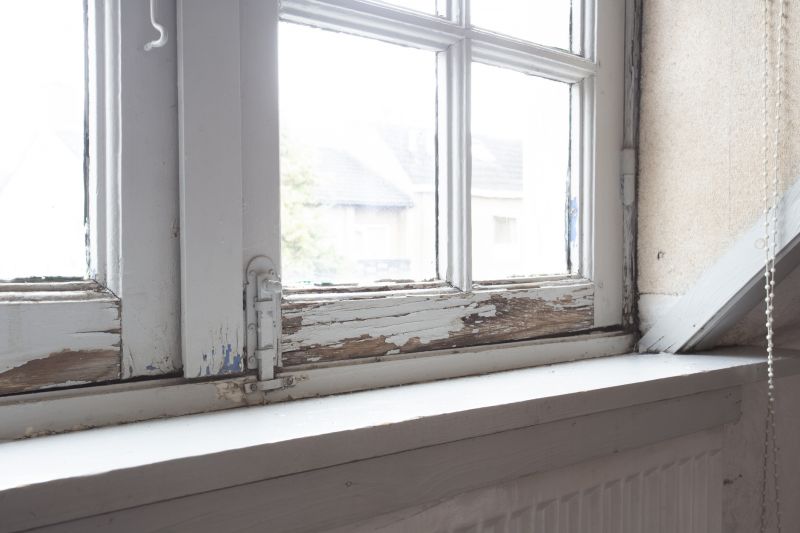Favorite Dry Rot Repair Solutions For Effective Property Maintenance
Browse trusted products that help you address dry rot issues quickly and prevent future damage.
 Dry rot is a form of wood decay caused by fungi that can compromise the structural integrity of wooden elements in buildings. It often appears as a crumbly, dry, and brittle texture on affected wood surfaces, and if left untreated, it can lead to significant damage and safety concerns. Addressing dry rot requires a combination of identification, removal of decayed material, and application of specialized repair products to prevent further deterioration. Proper repair not only restores the strength of the affected areas but also helps prevent the spread of fungal growth to adjacent structures.
Dry rot is a form of wood decay caused by fungi that can compromise the structural integrity of wooden elements in buildings. It often appears as a crumbly, dry, and brittle texture on affected wood surfaces, and if left untreated, it can lead to significant damage and safety concerns. Addressing dry rot requires a combination of identification, removal of decayed material, and application of specialized repair products to prevent further deterioration. Proper repair not only restores the strength of the affected areas but also helps prevent the spread of fungal growth to adjacent structures.
Top Overall Option
Comprehensive Dry Rot Repair Kit
A complete dry rot repair kit typically includes fungicidal treatments, consolidants, and fillers designed for various stages of repair. These kits offer a streamlined solution for addressing dry rot issues, providing all necessary components in one package. They are suitable for both DIY enthusiasts and professionals seeking reliable, integrated products to restore affected wood and prevent future fungal growth.
Types of Products For Dry Rot Repairs
Fungicidal Treatments
Used to eliminate active fungal growth and prevent recurrence, fungicidal solutions are essential for initial treatment of dry rot-affected areas.
Wood Consolidants
These products penetrate and strengthen compromised wood, restoring its structural integrity and preparing it for further repairs.
Wood Fillers and Epoxies
Designed to fill cracks, holes, and decayed sections, these fillers help restore the surface and provide a stable base for finishing.
Sealants and Coatings
Protective coatings and sealants act as barriers against moisture and fungal spores, helping to safeguard repaired areas.
Moisture Barriers
Applied around wood structures, moisture barriers prevent water infiltration that can promote fungal growth.
Dry Rot Detectors
Tools and products that help identify early signs of dry rot, facilitating prompt intervention before extensive damage occurs.
Structural Reinforcements
Metal or composite supports used to reinforce severely weakened wood after treatment and repair.
Biocides
Chemical agents that inhibit fungal growth, often used in conjunction with other treatments for comprehensive repair.
Surface Cleaners
Products that prepare the wood surface by removing dirt, mold, and loose debris prior to applying repair treatments.
Dry Rot Repair Kits
All-in-one packages containing a combination of treatments, fillers, and sealants designed for comprehensive dry rot repair.
Popular Choices
Widely used for treating affected wood, these products help inhibit fungal growth and provide ongoing protection.
A versatile filler that bonds strongly to wood surfaces, suitable for filling large holes and cracks in damaged wood.
Products designed to penetrate and strengthen decayed wood, often used as part of a multi-step repair process.
Sealants that create a protective barrier against moisture infiltration, helping to prevent future dry rot issues.
Tools and solutions that assist in early identification of dry rot, enabling timely repairs.
Metal plates or supports used to reinforce weakened wood after treatment, ensuring stability.
Chemical solutions that help prevent fungal growth when applied to vulnerable wood surfaces.
Products that prepare wood surfaces by removing dirt, mold, and loose material before applying repairs.
Coatings designed to protect wood from water damage, reducing the risk of future dry rot development.
Complete epoxy kits suitable for filling and restoring decayed wood sections with durable bonds.
Effective dry rot repair involves selecting the right products tailored to the severity and location of the damage. Typically, this includes fungicidal treatments to eliminate active fungi, consolidants to strengthen compromised wood, and fillers or sealants to restore surface integrity. It is essential to follow manufacturer instructions carefully and consider professional assessment for extensive damage. Using high-quality repair materials ensures a more durable and reliable fix, reducing the likelihood of recurring issues.
When choosing products for dry rot repairs, factors such as compatibility with existing materials, ease of application, drying time, and safety should be considered. Proper preparation of the affected area, including cleaning and removing loose debris, enhances the effectiveness of repair products. Regular inspections following repairs can help identify early signs of re-infestation or new damage, allowing for timely intervention. Overall, a comprehensive approach combining appropriate products and diligent maintenance can help preserve wooden structures and extend their lifespan.
Key Buying Considerations
- Identify the extent of dry rot damage to determine the appropriate treatment approach.
- Choose products compatible with the type of wood and existing finishes in your structure.
- Consider the severity of decay to select suitable consolidants or fillers.
- Ensure the products are designed for interior or exterior use as needed.
- Review drying and curing times to plan your repair schedule effectively.
- Evaluate ease of application, especially if undertaking DIY repairs.
- Check for safety instructions and protective equipment requirements during application.
- Opt for products with good penetration capabilities to reach deep into affected wood.
- Look for comprehensive repair kits if multiple steps are required for your project.
- Assess the longevity and durability of the repair materials for long-term results.
- Consider moisture barriers or sealants to prevent future fungal growth.
- Evaluate the availability of replacement parts or additional supplies if needed.
- Read customer reviews for insights into product performance and ease of use.
- Verify that the products are suitable for the specific environmental conditions of your location.
- Determine if professional consultation is recommended for extensive damage.
This content contains affiliate links and we may earn a commission at no additional cost to you.
